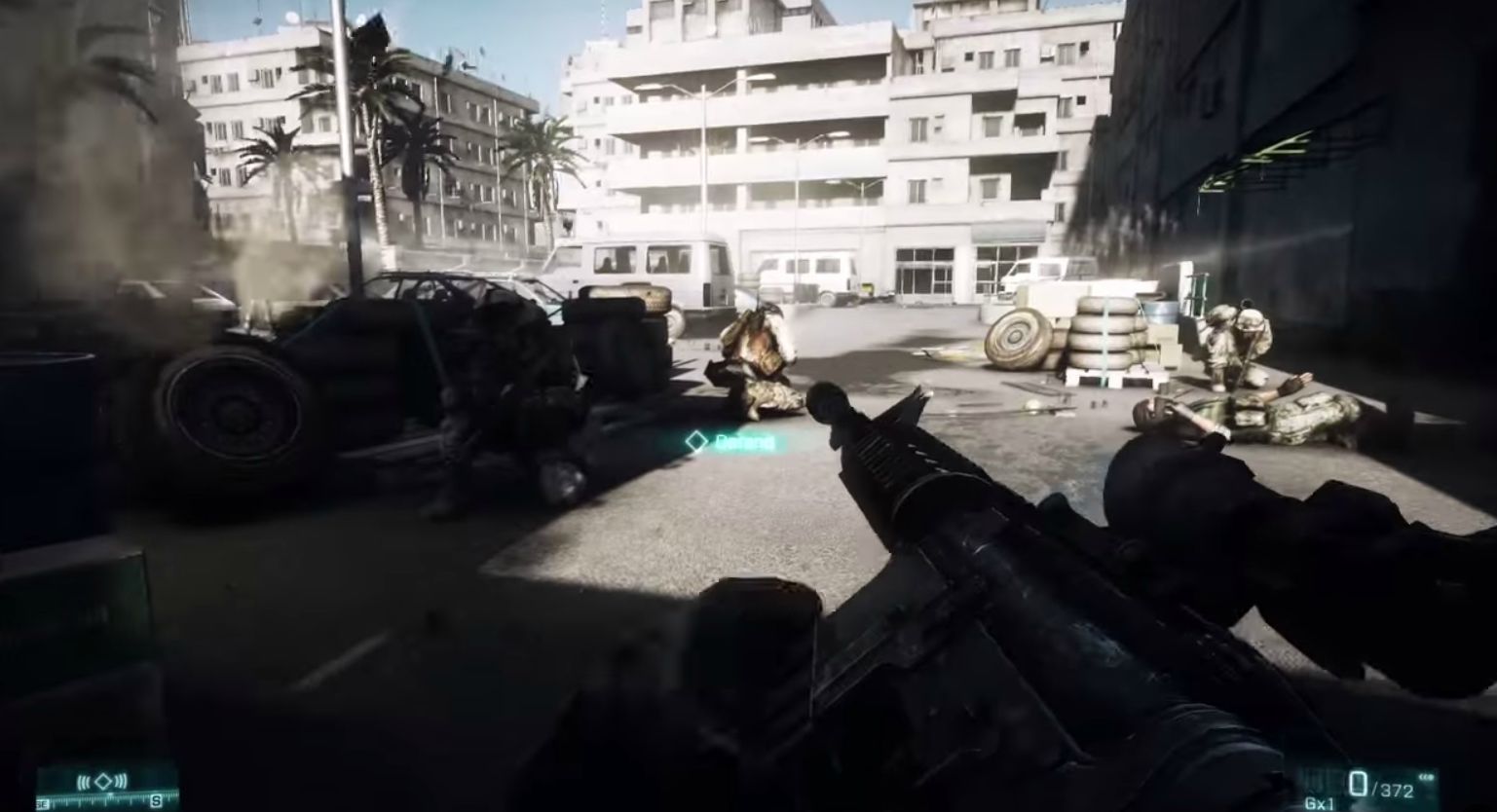There are many methods of combining various technologies with the goal of enhancing an experience, especially within the context of user immersion. The Gadget Show, a television program based out of the United Kingdom, looks at many of these combinations of technology both inside and outside of video game applications. In an episode focused on game immersion they explored the limits of realistic simulation in a first-person shooter.
They used a PC copy of Battlefield 3, hoping that the Frostbite 2 graphics engine and Ant character animation style would aid in the immersive experience. The show’s hosts searched for various components that they could use to build an immersive simulator. Through their research and work, they found many options and settled on an optimal collection of systems for Battlefield 3.
The Igloo Vision Dome is a large tent that encompasses 5 HD projectors, allowing for a 360o view of the game. A roller driven Omnidirectional treadmill that was developed in Europe, enabling the player to move at any speed in any direction. The treadmill uses 10 infrared cameras to track the person’s movement and speed to translate it into the game. A company called Extradimensional Technologies supplied 800 LED lights to aid in the ambiance of the dome. With some tinkering, their pixel tracking software that tracks the colour pigments in the game could also set off shots fired by a paintball turret. As suggested, the Gadget Show team incorporated the idea into the final prototype. The team used an App Blaster Gun to control shooting and reloading, fastening a set of balls to the front so that the infra-red cameras of the Omnidirectional treadmill could pick up where the player was facing and translate it to the game. APS Events and Media helped with making the projectors of the Igloo Vision Dome seamlessly connect so that as the player moves around, the screen moves with them. The final touches was to add an Xbox 360 Kinect to track jumping/crouching and a surround sound system.
After putting in the time and effort into building the immersive dome, it was time for testing. Both one of the show hosts as well as an army veteran tested this system and found it to be incredibly realistic. For the veteran, it provided accurate environmental stimuli and thus an appropriate emotional response that lead to him acting as if he was back on the battlefield.
With the build by the Gadget Show team being a success, it makes me wonder if this will be the future of gaming. Will it become a patented set up that people can buy for their home? Or will it bring arcades back on the rise, since they may have the money and space for it? Will it revolutionize simulated training? Or will it make for a great way to exercise? With combining multiple technologies form various fields of development, we have limitless opportunities to further aid not just the video game industry, but other fields of work/research as well.
To watch the video: click here.



 Heroes of the Storm vs. League of Legends – Part II – Player Progression
Heroes of the Storm vs. League of Legends – Part II – Player Progression
My name is Jon Thomas and my business partner Collin Evans and I came across this simulator while researching new simulation technologies for an upcoming business venture. We are in the beginning stages of our planning and have our business proposal nearly finished, however we are interested in finding out more information regarding the first person shooter simulator. If you could reach out to us and provide additional information such as product price, installation, and any other relevant details it would be greatly appreciated. We are opening the business right by a military base and believe this would be a great addition to the area. It will provide soldiers with an incredible experience and will fit it perfectly with the other services we will provide.
We are also installing flight simulators and are looking at other possibilities. If you have other simulation products as well please let us know.
Thank you for your time.